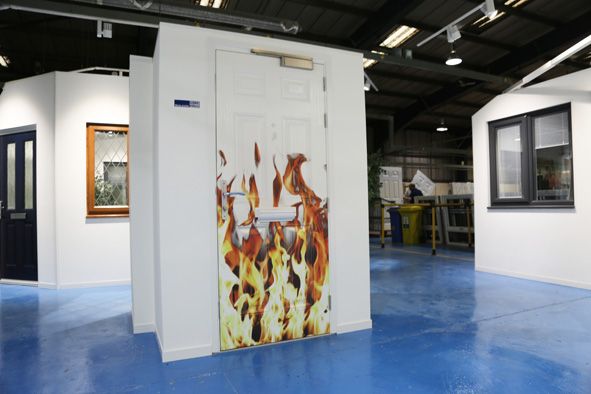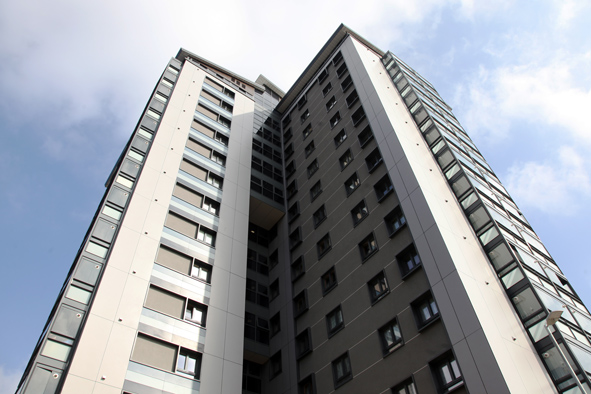Fire, Security and Safety
Watford Community Housing utilise Aico Multi-Sensor technology

Watford Community Housing has upgraded two of their 16 storey tower blocks to a Grade D, LD1 fire detection system using Aico’s revolutionary technology. Watford Community Housing own and manage over 5,000 homes and are always striving to implement all the necessary measures to keep their tenants safe.
Recently, their Abbey View and Munden View high rise blocks were chosen for mandated safety audits under Hertfordshire Fire and Rescue supervision. After an initial review of their housing stock, they decided to upgrade these buildings’ safety systems, working closely with Aico they began work to install Multi-Sensor fire alarms giving them complete coverage.
Doorset specialist Unity Group boosts production by investing in British innovation

British composite doorset and fire doorset specialists Unity Group has capped a £600,000 investment in production equipment and technology with the commissioning of a new machine that has doubled output.
Made in Britain members Unity Group, which comprises Unity Doors and JCK Joinery (a bespoke timber door specialist for more than 150 years), chose a fellow British manufacturer, Stuga Machinery, for its latest investment – Stuga’s best-selling ZX5 sawing and machining centre.
The ZX5 separates the machining and sawing functions, and by running both concurrently, Unity meets its daily requirements in one shift, with time to spare, when previously it was two shifts.
Large roof terrace decking replacement project

Aluminium has been increasingly recognised as a viable material for construction products over recent years. We spoke with Richard Izzard, manging director of AliDeck, about a recent major roof terrace refurbishment project for Hyde Housing.
With concerns over fire-safety in external wall systems shifting industry towards non-combustible solutions, the benefits of extruded aluminium profiles, such as decking or cladding boards, have answered many of these new challenges.
The benefits of using aluminium products in new-build construction go beyond simple compliance with regulations, though. Its lightweight, cost-effectiveness, striking aesthetics, sustainability and versatility are all key contributing factors to aluminium’s uptake. These benefits, of course, apply for the retrofit and remediation market and aluminium building products are routinely now sought by specifiers in the housing sector.
- Read more about Large roof terrace decking replacement project
- Log in to post comments
Fire door compliance covered thanks to Shelforce and Fireshel

When it comes to fire doors, forget the aesthetics – it’s all about the compliance and technicalities of the product. Since launching its fully compliant Fireshel 30-minure fire, smoke and security resistant door in 2020, Birmingham window and door manufacturer Shelforce has been inundated. Here, the company’s Business Manager Howard Trotter talks to Housing Association Magazine about why the testing behind the product is vital for Local Authorities, why they need to understand what they are specifying – and why the Fireshel is proving so popular.
Collaboration key to success for fire safety remediation project
Fire safety remediation in the external envelope of buildings continues to be a key issue affecting the housing sector. As industry adapts to new regulatory realities post-Grenfell, the need to bring existing multi-occupancy housing stock into compliance remains urgently pressing. We spoke to Richard Izzard from aluminium decking manufacturer AliDeck to learn about a recent major remediation project in Southwark for Wandle Housing Association.
Balconies, upstands and terraces… fire safety across the entire building envelope

The conversation around fire safety in high rise developments has never been more critical, and much attention is being given to the building materials used across large expanses such as façades and flat roofs. To achieve regulatory compliance, however, it’s crucial to pay attention to each and every detail. Will Wigfield, Product Manager – Building Envelope, ROCKWOOL UK, examines the fire safety implications of external amenities above ground level such as balconies, upstands and terraces, and discusses product certifications which help stakeholders to achieve the required performance.
Copyright © 2025. All rights reserved.
Designed By Euromedia Associates Ltd














